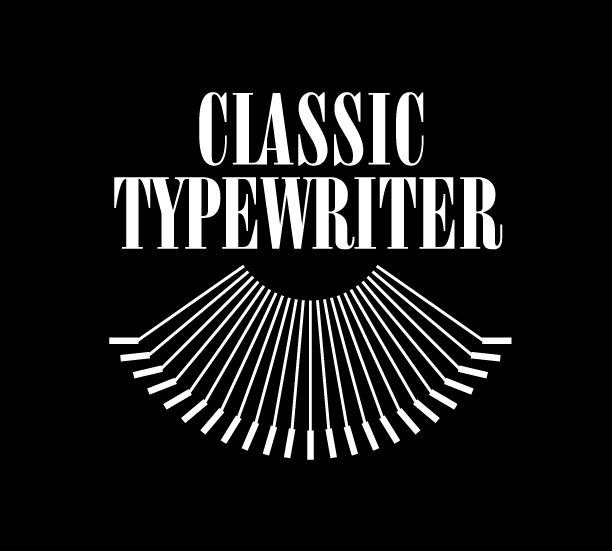Typewriter Font: Exploring Typeface History and Limitations
Typeface of a 70’s SM9 by Olympia. When you purchase a typewriter you’re ‘stuck’ with the typeface.
When it comes to the art of written communication, typewriters and computers have both left their mark—literally and metaphorically. One key difference lies in their use of fonts and typefaces. While computers offer endless customization, typewriters have a nostalgic charm, tied to a single, fixed typeface. Let’s dive into the history of typewriter fonts, the distinction between fonts and typefaces, and how they shaped design and writing.
Typewriter Font vs. Typeface: Clearing the Confusion
Many people use the terms font and typeface interchangeably, but they actually mean different things.
Typeface: Refers to the design of the letters, numbers, and symbols (e.g., Courier or Times New Roman).
Font: Refers to a specific implementation of that typeface, including weight (bold or italic) and size (12pt, 16pt, etc.).
On a typewriter, what you see is a typeface, but it’s often called a font in casual conversation. Unlike computers, where you can change typefaces and tweak sizes, typewriters are stuck with one fixed typeface—the result of the physical metal type slugs or print ball.
Classic Typewriter Typefaces
Typewriter typefaces have a distinct look, often characterized by monospaced letters where each character takes up the same amount of space. This uniformity, while simple, has its own beauty. Here are some of the most iconic typewriter typefaces:
Courier
Designed in 1955 by Howard Kettler, Courier became the quintessential typewriter typeface. Its monospaced design made it easy to align text, perfect for official documents and screenplays.Pica
Pica was widely used in typewriters, producing clean, readable text at a standard 10 characters per inch.Elite
A smaller alternative to Pica, Elite had 12 characters per inch, offering a more compact, efficient layout.Letter Gothic
This sans-serif monospaced typeface became popular for technical applications and data-heavy documents.
Computers and Fonts: A World of Choices
With the rise of digital word processors, we’ve moved from single typefaces to a world of customizable fonts. On a computer, you can:
Change Typefaces: Switch between serif, sans-serif, decorative, and script styles.
Adjust Font Sizes: Easily increase or decrease size to suit your design.
Modify Font Attributes: Add bold, italics, or underline for emphasis.
This flexibility is perfect for creating visually appealing designs, but it lacks the tactile, personal charm of a typewritten page.
Limitations of Typewriters and Their Charm
Unlike modern computers, typewriters are locked into a single typeface, often with no size adjustments. This limitation might seem like a drawback, but it’s part of their appeal. The uniformity creates a distinct aesthetic, which has made typewriter fonts popular in retro design projects and vintage-inspired branding.
Additionally, the permanence of typewriter text fosters a connection between the writer and the written word. There’s no backspace key—only deliberate keystrokes and occasional correction tape.
The Enduring Appeal of Typewriter Fonts in Modern Design
Typewriter-inspired fonts like Courier New, American Typewriter, and IBM Plex Mono have made their way into digital typography. These fonts evoke nostalgia while offering the convenience of modern design tools. They’re especially popular in:
Creative Writing Projects: Emulating the tactile feel of drafting on a typewriter.
Graphic Design: Adding a vintage or industrial aesthetic.
Screenwriting: Preserving the uniformity that typewriters brought to scripts.
Final Thoughts on the Artistic Value of Typewriter Fonts
Whether you’re a typewriter enthusiast or a fan of digital design, understanding the difference between fonts and typefaces deepens your appreciation for these tools. While computers give us infinite creative freedom, typewriters remind us of the beauty of simplicity and constraint.
For anyone inspired by the precision and nostalgia of typewriter fonts, there’s never been a better time to explore their use in design and writing. Sometimes, the limitations of the past can spark the creativity of the future.
Would you like tips on finding the perfect vintage typewriter or advice on blending typewriter fonts with modern designs? Let me know!

